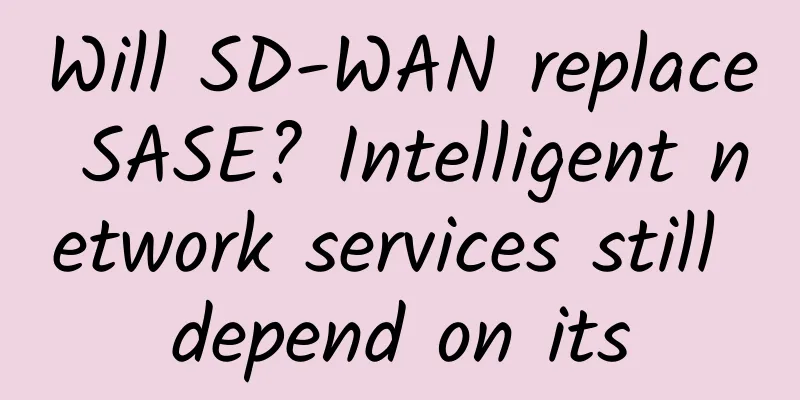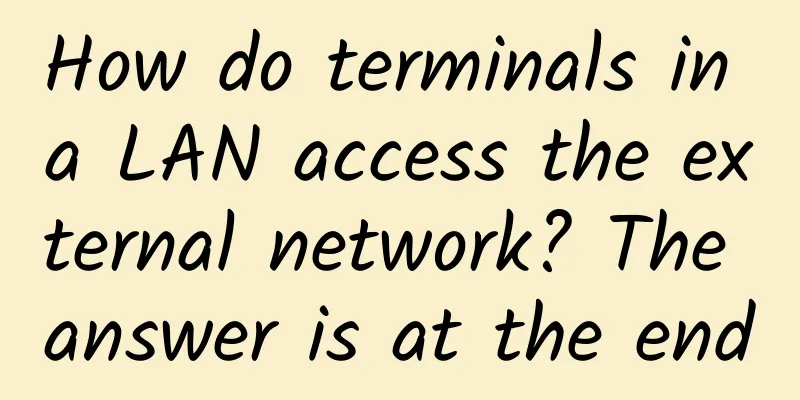Will SD-WAN replace SASE? Intelligent network services still depend on its

|
If we think about it, we will find that many of our expectations for network services are actually related to our own personalized needs. We expect network services to work as we want them to. At the same time, we hope that network operators can understand us and adapt to our needs. Can a giant global interconnected network composed of hundreds of thousands of elements do this? This means that personalized services must be involved in the edge of the network where users actually own it.
We realized decades ago that you can’t make a massive network user-aware or service-aware. This awareness, called “stateful” in network language, means that users put their own avatars into the network to represent their interests. This avatar might be an entry in a routing table or a policy stored in a repository, but if they were personalized, they would be individualized, and they wouldn’t scale. Not only would the network become too fragmented, but network traffic would be reconfigured, devices would fail, and user-personalized network components would not even be able to pass traffic. Which providers are selling SASE (Secure Access Service Edge) appliances, and what do users get out of them? Once you start an edge device, it's easy to forget when to terminate the service. Users need to take it seriously. The advantage of edge devices in the network is that they are dedicated to the user. In this huge global interconnected network, if there is any place that expects to know everything about you, it is these small terminals. The potential for personalization makes them very useful. Users might assume that the importance of edge in personalized services would be discovered since the emergence of service endpoints with services, but somehow this seems to have been overlooked. Today, two things have changed this: the first is software-defined wide area network (SD-WAN), and the second is secure access service edge (SASE). SD-WAN enables personalized services at the edgeSD-WAN is exploding in popularity. Research shows that the number of sites on SD-WAN today is almost three times what it was a year ago. There may be 50 vendors offering SD-WAN, and dozens of communications and managed service providers. In this fiercely competitive environment, all vendors are working hard to develop new features for SD-WAN. Currently, supporting small sites and even cloud applications has received widespread attention. Work from home, service telemetry, application prioritization, and zero-trust security are also gaining attention. This feature enhancement process is relatively easy for SD-WAN vendors/providers, but more difficult for network service providers and the Internet, mainly because of the edge personalization mentioned above. If users deploy SD-WAN, then users have an entrance to their virtual network, that is, the edge. This entrance can do all the work that is beneficial to service personalization, so that users' services appear to be designed specifically for them, because these are all their own.
We can’t personalize our massive networks to reflect our application priorities, and perhaps we don’t have to. Capacity is most limited and valuable at the point where users connect. SD-WANs can enforce application traffic prioritization at the edge, the tipping point for congestion. This can greatly improve quality of service, but SD-WANs can also tag traffic by priority or send it over different routes. These efforts require a standard way to determine priorities, and support for that approach on both the SD-WAN and the network. Beyond that, all virtual networks offer some degree of inherent security, and some SD-WANs offer session-aware zero-trust security. Intrinsic security can be increased with some inherent access point prioritization and QoS classification, meaning that SD-WANs may replace the SASE concept. SD-WAN: The Smart Gateway for Dumb NetworksSD-WAN is a gateway that can provide new service capabilities and plays a stabilizing role at the edge. This shift in edge thinking, if it really works, will have a profound impact. This is not to say that networks are no longer important, on the contrary, they can deliver the experience established at the edge. What does the best network look like? Is it invisible and cost-free? Obviously, things are more complicated than they seem on the surface. Moving the functionality of services to local devices allows many vendors to sell these functions. This can promote managed services and can also take advantage of intelligent edge devices to manage SLAs, while providing operators with the opportunity to sell higher-margin products, which will make the service market more competitive and allow "network" technology to focus on management costs. At the same time, the intelligent edge also allows non-intelligent networks to take advantage of intelligence. SD-WAN as a ServiceNetwork operators need to respond to this new edge-centric vision, and managed services seem to be the only thing they can really do. If services become more personalized, each network user will almost be a private network, which many enterprises may not want. SD-WAN's embedded management tools can provide operators with a way to manage economies of scale, allowing operators to provide managed services at a price that users can accept, and of course operators can still earn significant new profits. If anyone thinks that enterprises won't accept managed services, then they can look at cloud services. We have seen cloud computing services move towards managed services because that is what users want. It is no good to build an excellent low-touch managed cloud service on top of a high-touch network service. Cloud providers are also said to be developing their own SD-WAN and managed service strategies. The edge is not just our option, it may even be our best option. The next time you see edge devices, I hope you can cherish them and tidy up their workplaces, because they are our gateway to future network services. |
<<: The global 6G competition has quietly begun
>>: Samsung bets on European 5G orders to grow network equipment business
Recommend
LiFi is a wireless communication technology that uses visible light communication to transmit data
Visible light communication is a technology that ...
Andrew Ehlers: Promoting with an ecological approach from a data perspective
[[327407]] Director of Global Technology and Solu...
Beware of walls! Can Wi-Fi become a paparazzi and also a holographic image?
In the wilderness, two nimble figures move left a...
What are the unique values of enterprise-level Wi-Fi Mesh networks?
Wi-Fi introduced mesh technology very early, and ...
edgeNAT Anniversary Sale 40% off, Hong Kong/Korea/US Data Centers Available
edgeNAT launched its first anniversary celebratio...
How do cellular networks serve the Internet of Things?
Cellular networks provide the backbone for many o...
Preparing for 5G: The three major operators are busy withdrawing 2G from the network
Domestic operators will launch 5G networks in 202...
Yunfan Accelerator's Chen Hui talks about how the revenue of new media in radio and television can outperform the cost
On May 17-18, the 2017 Asia-Pacific OTT/IPTV Ecos...
Media Statement on the U.S. Department of Commerce’s Modification of the Direct Product Rule Regarding Huawei
Huawei strongly opposes the US Department of Comm...
How does private 5G impact Industry 4.0 transformation?
Private 5G networks have become very popular as r...
How to solve the voice delay problem after core network upgrade
picture After an operator upgraded its core netwo...
Can't tell the difference between a router and a modem? This article will tell you
When we deploy a WiFi network at home, there are ...
What else does a smart city need besides technology?
There are questions that need to be answered abou...
[11.11]80VPS: 50% off all VPS, special VPS annual payment starting from 199 yuan, multiple data centers in Hong Kong/US/Japan/Korea, etc.
80VPS also launched a promotion during the Double...
The difference between edge computing and distributed computing
Edge computing focuses on placing computing and s...









